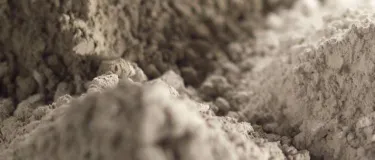All about Cement
Although cement is one of the oldest building materials around, its production process is a mix of traditional chemistry and hi-tech equipment to make the cement used in homes, hospitals and schools around the world.
From the raw material quarry to the delivery of the end product, follow every step in the cement manufacturing process.
Step 1: Extraction of Raw Materials
The raw materials needed to produce cement (calcium carbonate, silica, alumina and iron ore) are generally extracted from limestone rock, chalk, shale or clay. These raw materials are won from the quarry either by extraction or through blasting.
These naturally occurring minerals are then crushed through a milling process. At this stage, additional minerals are added to ensure the correct chemical composition to make cement is in place. These minerals can be obtained from waste or by-products of other industries, such as paper ash. After milling, the raw meal (as it is known) is transported to the plant where it is stored.
Step 2: Raw Grinding and Burning
Grinding produces a fine powder, known as raw meal, which is preheated and then sent to the kiln. The kiln is at the heart of the manufacturing process. Once inside the kiln, the raw meal is heated to around 1,500°C - it is of a similar temperature to molten lava. At this temperature, chemical reactions take place to form cement clinker, containing hydraulic calcium silicates.
In order to heat the materials to this very high temperature, a 2,000°C flame is required, which can be produced through the use of fossil and waste-derived fuels. The kiln itself is angled by 3° to the horizontal to allow the material to pass through it, over a period of between 20-30 minutes.
Upon exiting, the clinker is cooled and stored ready for grinding to produce cement.
Step 3: Cement Grinding and Shipping
A small amount of gypsum (3-5 ) is added to the clinker to regulate how the cement will set, the mixture is then very finely ground. During this phase, different mineral materials, called ‘additions', may be added alongside the gypsum. Used in varying proportions, these additions, which are of natural or industrial origin, give the cement specific properties such as reduced permeability, greater resistance to sulfates and aggressive environments, improved workability, or higher-quality finishes.
Finally, the cement is stored in silos before being shipped in bulk or in bags to the sites where it will be used.






